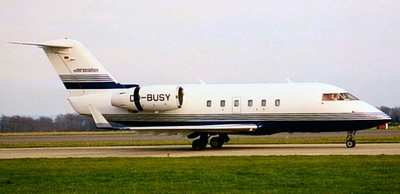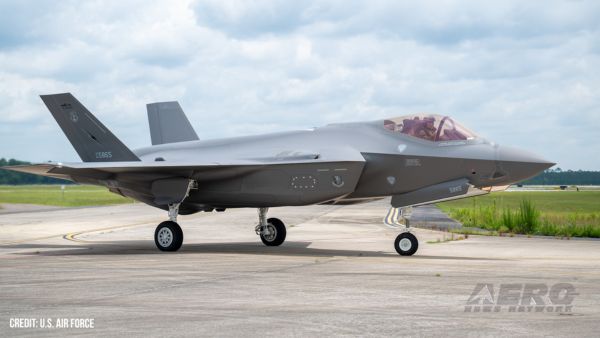Captain Later Diagnosed With Sleep Apnea
 The NTSB has released a probable
cause report for an incident in which both pilots of a go! Airlines
Bombardier CL-600 fell asleep while flying from Honolulu to Hilo,
Hawaii. While the captain on the flight was later diagnosed with
obstructive sleep apnea, the NTSB determined that crew fatigue
played a major role in the incident. After overshooting its
destination by 26 miles, the plane returned to Hilo and landed
safely. The NTSB report says, in part:
The NTSB has released a probable
cause report for an incident in which both pilots of a go! Airlines
Bombardier CL-600 fell asleep while flying from Honolulu to Hilo,
Hawaii. While the captain on the flight was later diagnosed with
obstructive sleep apnea, the NTSB determined that crew fatigue
played a major role in the incident. After overshooting its
destination by 26 miles, the plane returned to Hilo and landed
safely. The NTSB report says, in part:
Scheduled 14 CFR Part 121: Air Carrier operation of Mesa
Airlines (D.B.A. GO)
Incident occurred Wednesday, February 13, 2008 in Hilo, HI
Probable Cause Approval Date: 8/3/2009 3:34:10 PM
Aircraft: Bombardier, Inc. CL-600, registration: N651BR
Injuries: 43 Uninjured
 go! flight 1002 departed for its
destination about 0916 Hawaii standard time. About 0930, the
captain transmitted to air traffic control (ATC) that the flight
was climbing through 11,700 feet to its cruise altitude of flight
level (FL) 210 (approximately 21,000 feet mean sea level.) The
controller acknowledged the transmission and cleared the flight to
proceed to an intersection along the flight route located about 29
miles north-northwest of the destination airport, and the flight
crew acknowledged. At 0933, during cruise flight, the controller
repeated the navigational clearance, which the flight crew
acknowledged, and the airplane turned in accordance with the
clearance. At 0940, the controller instructed the flight to change
radio frequencies, and there was no response. The controller
continued to try to contact the flight crew multiple times but
received no reply. At 0951, the airplane crossed the intersection
that was its clearance limit then turned southeast toward the
destination airport without descending, which is consistent with
the airplane being on autopilot. The controller handling the flight
asked another controller to attempt to contact the flight crew on a
different frequency, but there was still no response, and the
flight proceeded on a southeasterly heading at FL 210. About 0955,
the flight crossed over the destination airport and continued on a
southeasterly course without changing altitude or heading. Two
separate airline crews in the area attempted to contact the
incident crew, but neither flight crews’ attempts were
successful.
go! flight 1002 departed for its
destination about 0916 Hawaii standard time. About 0930, the
captain transmitted to air traffic control (ATC) that the flight
was climbing through 11,700 feet to its cruise altitude of flight
level (FL) 210 (approximately 21,000 feet mean sea level.) The
controller acknowledged the transmission and cleared the flight to
proceed to an intersection along the flight route located about 29
miles north-northwest of the destination airport, and the flight
crew acknowledged. At 0933, during cruise flight, the controller
repeated the navigational clearance, which the flight crew
acknowledged, and the airplane turned in accordance with the
clearance. At 0940, the controller instructed the flight to change
radio frequencies, and there was no response. The controller
continued to try to contact the flight crew multiple times but
received no reply. At 0951, the airplane crossed the intersection
that was its clearance limit then turned southeast toward the
destination airport without descending, which is consistent with
the airplane being on autopilot. The controller handling the flight
asked another controller to attempt to contact the flight crew on a
different frequency, but there was still no response, and the
flight proceeded on a southeasterly heading at FL 210. About 0955,
the flight crossed over the destination airport and continued on a
southeasterly course without changing altitude or heading. Two
separate airline crews in the area attempted to contact the
incident crew, but neither flight crews’ attempts were
successful.
About 0958, when the flight was about 26 nautical miles
southeast of the destination airport, the captain contacted the
controller with an abbreviated call sign (“Ah HCF ten zero
two”), and the controller asked if the flight crew was
experiencing an emergency. The captain responded, "No, we must have
missed a hand off or missed a call or something." The controller
then issued instructions for the flight to return to the
destination airport, with which the flight crew complied. The
flight arrived without further incident about 1015.
The captain and first officer both reported to their company
that they had unintentionally fallen asleep in flight. The fact
that both pilots fell asleep during the midmorning hours, a time of
day normally associated with wakefulness and rising alertness,
indicates that both pilots were fatigued.
The captain had undiagnosed severe obstructive sleep apnea,
which was diagnosed during a medical evaluation shortly after this
incident and for which symptoms (such as snoring) and risk factors
(such as obesity) were present before the incident. This condition
likely caused him to experience chronic daytime fatigue and
contributed to his falling asleep during the incident flight.

File Photo
In addition, the day of the incident was the third consecutive
day that both pilots started duty at 0540. This likely caused the
pilots to receive less daily sleep than is needed to sustain
optimal alertness and resulted in an accumulation of sleep debt and
increased levels of daytime fatigue. The first officer stated he
needed between 7.5 and 8 hours of sleep per night to feel rested.
He estimated that he had spent about 7 hours 25 minutes in bed the
night before the incident, and about 6 hours 55 minutes in bed
during each of the previous two nights. Thus, the first
officer’s self-reported sleep history indicated an
accumulated sleep debt of between 1 hour 15 minutes and 2 hours 45
minutes in the 72 hours before the incident. The first
officer’s reduced sleep probably resulted from the flight
crew’s recent work schedule.
The incident pilots’ lack of adequate sleep, together with
the low workload associated with the cruise phase of the flight,
likely contributed to the pilots inadvertently falling asleep.
The National Transportation Safety Board determines the probable
cause(s) of this incident as follows:
The captain and first officer inadvertently falling asleep
during the cruise phase of flight. Contributing to the incident
were the captain's undiagnosed obstructive sleep apnea and the
flight crew’s recent work schedules, which included several
consecutive days of early-morning start times.
 Aero-News: Quote of the Day (08.28.25)
Aero-News: Quote of the Day (08.28.25) ANN's Daily Aero-Linx (08.28.25)
ANN's Daily Aero-Linx (08.28.25) Classic Klyde Morris (08.25.25)
Classic Klyde Morris (08.25.25) Airborne 08.25.25: Zenith Homecoming, VP Racing, Affordable Flying Expo 2025
Airborne 08.25.25: Zenith Homecoming, VP Racing, Affordable Flying Expo 2025 Airborne 08.22.25: ARC Spinoff, Nat'l Championship Air Races, Hawkins Accident
Airborne 08.22.25: ARC Spinoff, Nat'l Championship Air Races, Hawkins Accident





